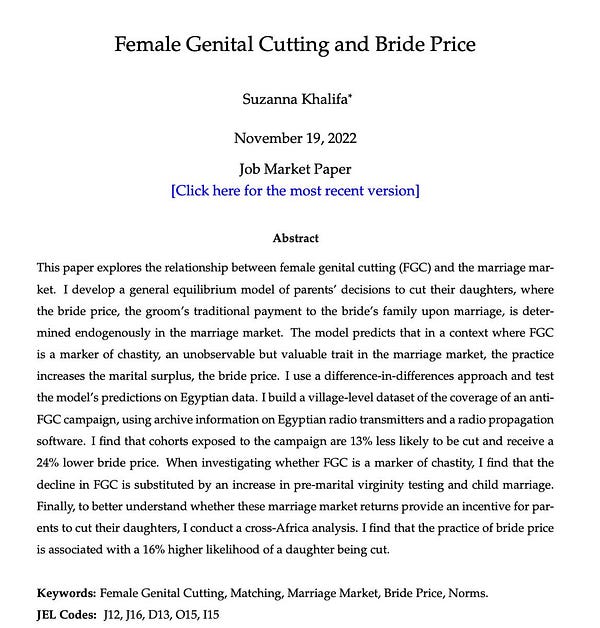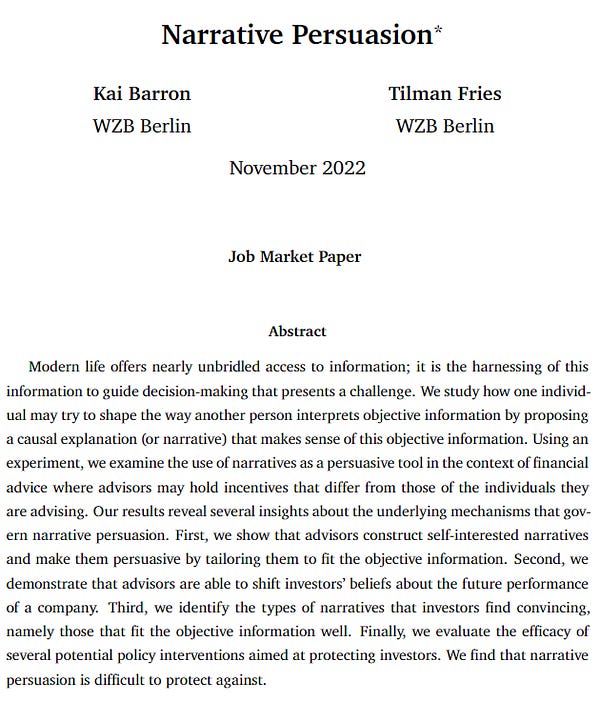Best of #econtwitter - JMPs 2022 special edition, part ten
If your thread (or your student’s, or your colleague’s) is missing below, submissions are as always extremely welcome.
Previously: 2022 JMPs part one, part two, part three, part four, part five, part six, part seven, part eight, part nine. Editions from prior years are here.
As written last year: Plausibly these JMP editions have the highest densities of good content of all the newsletters. These are presented in even less of a sense of any order than usual.
Job market papers

𝕏.com
I document 2 new stylized facts. 1st: Initial earnings and lifetime earnings differ across majors: majors associated with high initial earnings (e.g., teaching) lead to low lifetime earnings compared to majors with low initial earnings (e.g., bio and physics)


𝕏.com
The 2nd stylized fact is that students from low-income, low-credit score families choose majors with higher initial wages but lower earnings growth, compared to students from high-income, high credit-score families.





𝕏.com
I then estimate the causal impact of student debt on college major choice, by exploiting the staggered implementation of a financial aid policy called a universal no-loan policy, which replaced debt-financing with grants at 22 universities between 2001 and 2019.

𝕏.com
Following the policy, students with less debt are more likely to choose majors that have lower initial wages after college and higher earnings growth in the long term. For example, students with less debt are more likely to become doctors and lawyers.

𝕏.com
Hi #EconTwitter ! I am super excited to share my #jobmarketpaper “Female Genital Cutting and Bride Price”
200 million women alive today have undergone female genital cutting (@WHO). Why? I show that the practice generates marriage market returns.
🧵#EconJobMarket



𝕏.com
🚨 Job Market Paper 🚨
Q: What are the long-run implications of booming labor markets on intergenerational wealth accumulation? E.g., do kids from San Francisco accumulate wealth differently than kids from Detroit?
A: Yes, but only if the parent is a homeowner!

^phone for Henry George

𝕏.com
How do workers value retirement benefits? How do they affect recruitment?
Employers spent $1.3trn on DC retirement plans 2010-19. So this is a really significant question.
And it's the Q Allie Colle @MITSloan tackles in her superb JMP w/ @Bledi_Taska 🧵
allison-cole.com


𝕏.com
To make sense of the world around us, we draw inference from data.
Can one individual influence how another interprets data by proposing alternative explanations?
I address this question in my job market paper (joint w/ @kaibarron).
Thread⬇️, paper: tilmanfries.github.io/assets/pdf/JMP…


𝕏.com
I've written a paper to show that part of the US’s financial turbulences witnessed since the 1980s are due to the fall in the Capital Gains Tax (CGT).
Without tax cuts, this is what would've happened 👇
Do you want to know why?
🧵 [1/10].
#EconTwitter #Econjobmarket


𝕏.com
Do wage subsidies (such as the EITC) fully benefit employees? Or is part of their benefit shifted to employers via lower wages? My co-author & student @M_Gravoueille is on the job market this year & answers this question in his job market paper: maximegravoueille.com/research/ [1/9]


𝕏.com
So what was the effect of DOMA and US v. Windsor on marriage rates and couple formation? I answer this question in my Job Market Paper!

Econ Job Market Helper @econ_jmp

